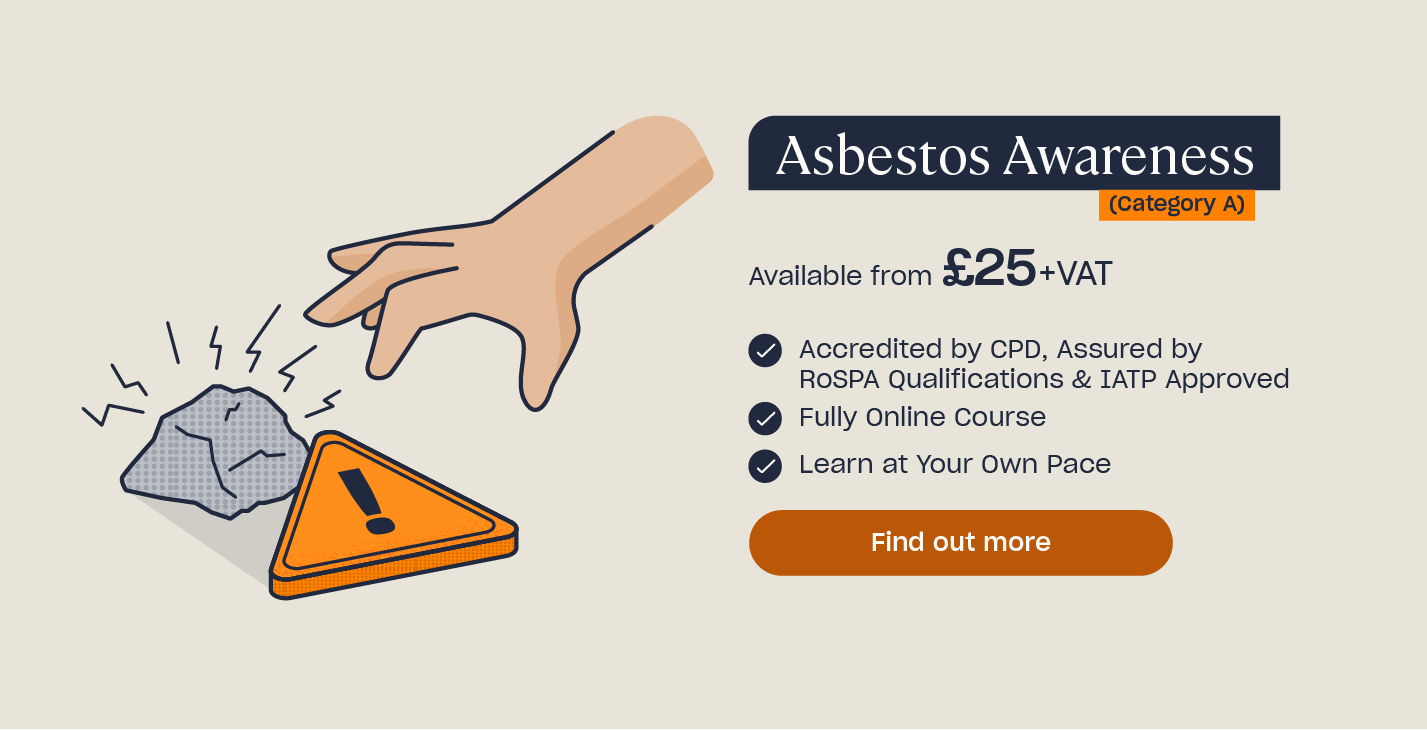What are the Symptoms of Asbestos Exposure?
The symptoms of exposure to asbestos take many years to develop, so diagnosing asbestos symptoms and identifying asbestos exposure can be a difficult and lengthy process. For example, most cases of lung cancer and asbestosis only become apparent from 15 years after the initial exposure and, for mesothelioma, symptoms may not appear until 30 years have passed.
Generally, it is only workers who have come into contact with asbestos fibres who suffer from asbestos related illnesses in the future. However, there is some evidence to say that the family members or colleagues of workers who are heavily exposed to asbestos are also at risk of contracting mesothelioma, due to fibres being transferred from the worker’s clothing, hair or skin.

Our quick guide below helps you to understand more about the most common symptoms of asbestos exposure.
Common Asbestos Related Diseases
If an asbestos material is damaged or disturbed, it releases lots of tiny asbestos fibres into the air. When these are inhaled, they become trapped in the lungs’ air sacs, and eventually lead to the reduced capacity to take in oxygen and remove carbon dioxide. Breathing in asbestos fibres can lead to many serious health problems of the respiratory tract later in life.
Asbestos related diseases include:
- Asbestosis – a lung disease resulting from the inhalation of asbestos particles.
- Mesothelioma – a cancer of the lungs’ surface tissue.
- Lung cancer.
- Lung problems, such as the collection of fluid in the chest and the thickening of the membrane surrounding the lungs.
Scroll down to learn more about the most common symptoms for each of these illnesses.
Individual reactions to asbestos vary and depend on a number of factors:
- The amount of asbestos the person was exposed to.
- How long the person was exposed for.
- The nature of the asbestos fibres.
- Whether the person already has a lung disease or problem.
- Whether the person is a smoker (smoking increases the frequency and/or progression of asbestosis).
Need a Course?
Our Asbestos Awareness Course is designed for anybody who works with, or near, asbestos at work. You will understand what asbestos is and where you may encounter it, the dangers associated with asbestos exposure, and what to do if you discover asbestos.
Signs & Symptoms of Asbestos Related Diseases
Most symptoms of asbestos-related diseases don’t appear until around 20 years, but can range anywhere from 10 to 50 years. As described above, this depends on the level of exposure and numerous other factors. As soon as you identify symptoms however, you must seek medical advice. Therefore, if you’ve been significantly exposed to asbestos and suspect you may be suffering symptoms later down the line, it’s crucial to know what to look for.
Asbestosis
The most common symptoms of asbestosis are:
- Shortness of breath.
- Coughing.
- Chest pain and/or tightness.
- Loss of appetite.
- Difficulty swallowing.
- Weight loss.
- Swelling in the neck or face.
- Blood in the throat mucus.
- Dry, crackling breathing.
- Softening of the fingernail beds, bulging of the fingers or misshapen nails.

Mesothelioma
The most common symptoms of mesothelioma are:
- Shortness of breath.
- Tiredness and/or fatigue.
- Chest pain and reduced chest expansion.
- Harsh breathing sounds.
- Dry coughing.
- Sweating.
- Abdominal pain or swelling.
- Weight loss and/or loss of appetite.
- Blood clotting abnormalities.
- Anaemia.
- Fever.
Lung Cancer
The most common symptoms of lung cancer are:
- Coughing, including coughing up blood.
- A long-standing cough.
- Persistent chest infections.
- Chest pain.
- Wheezing and shortness of breath.
- Tiredness and lack of energy.
- Weight loss and/or loss of appetite.
- A high temperature.
- A hoarse voice.
- Swelling of the face or neck.
- Difficulty swallowing.

Many of the asbestos-related conditions share the same symptoms, so if you experience any or a number of these, you should arrange an appointment with your GP. Having these symptoms doesn’t necessarily mean that you have lung damage, but it is best to see your doctor to eliminate any serious illnesses. Find out more here: What to Do After Recent Exposure to Asbestos
Further Resources:
- Asbestos Quiz
- Answering Your Asbestos Awareness Questions
- How to Conduct an Asbestos Risk Assessment
- What is Gypsum in Construction?
- Can You Remove Asbestos Yourself?
- What Are The Three Types of Asbestos Training?
- Asbestos Awareness Course







